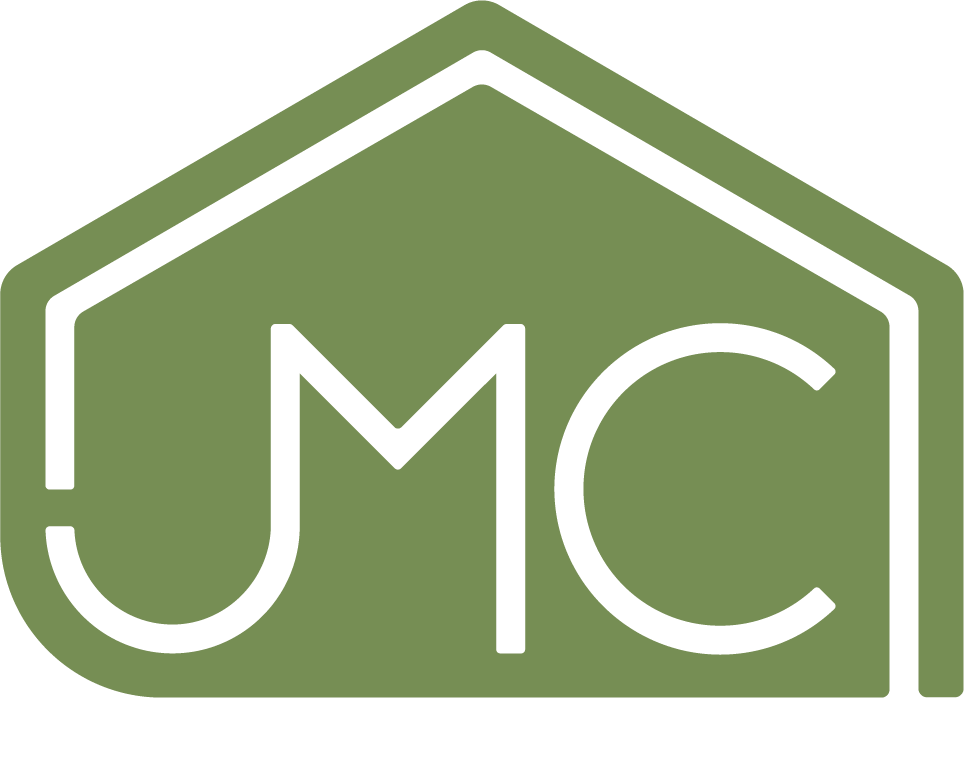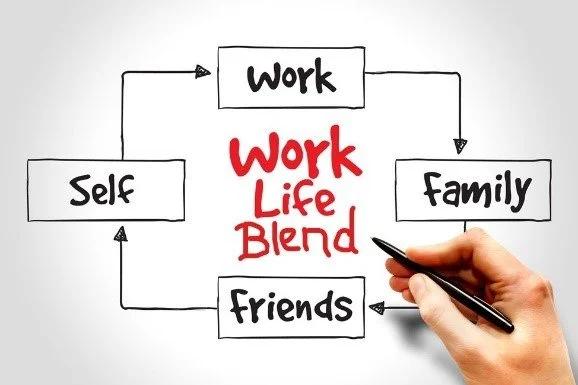44% Want Real Time Maintenance Support
Everyone wants to be heard, understood and acknowledged. When you want to put your voice into the room, don't you want others to hear you? And it isn't enough to just be heard. We need people to process our messages and understand them. Understanding actually reinforces our need to be heard. It says "I get what you're saying." But the real pinnacle is to be acknowledged! Acknowledgement doesn't mean you agree with me. Acknowledged means to confirm you have received the information.
Everyone wants to be heard, understood and acknowledged. When you want to put your voice into the room, don't you want others to hear you? And it isn't enough to just be heard. We need people to process our messages and understand them. Understanding actually reinforces our need to be heard. It says "I get what you're saying." But the real pinnacle is to be acknowledged! Acknowledgement doesn't mean you agree with me. Acknowledged means to confirm you have received the information.
This concept is beyond leadership and employee relationship and even behind friends and family. This idea of wanting to be Heard, Understood and Acknowledged goes for residents in multifamily. Specifically when residents are seeking a service request we sometimes view their multiple requests and phone calls as annoying, impatient and rude. What residents are seeking is to be validated. As the saying goes, If we put our feet in their shoes we can begin to understand how they feel. It is not about the actual broken sink, or the dishwasher or a toilet that may not work. Residents want consistent communication regarding their situation.
Amazon is a prime example where they share every step of the way for where your package is. When you order a package, you know when it leaves the warehouse, you know when it's out for delivery, you even know how many stops the driver is making before arriving at your home. And of course you know when it is delivered by the picture of the box that was left. This is transparent and consistent communication at its best.
Now we all know with maintenance teams struggling to find staff and the increased workload for leasing teams, it is extremely difficult to keep each and every resident up to date on their specific work order. On the other hand we do know resident’s number two reason for renewing is their maintenance experience which is a direct correlation to resident satisfaction.
What is the answer then?
I recently polled our industry with the question below. It was not surprising that the top two most selected in the poll were both along the lines of communication. Overall residents want to be heard and property management teams also believe enhanced support and communication would lead to operational efficiency and resident satisfaction.
We must think beyond the years old approach of having a call center. A call center is not real time maintenance support. A resident is not getting support when they have to leave a message or relay their message more than once. Residents want someone on the phone who has years of specific multifamily experience who understands their request and can help solve their issue in real time. (Happy Force is your 24/7 real time support) Residents want the options to be able to solve their request right there in the moment all while being heard, acknowledging that it is probably an inconvenience. The resident also understands that if someone needs to come to their home, that won’t be a problem, but understanding that someone was available to feel their frustration with them, and hear them out is important.
You may be asking how can real time maintenance support improve operational efficiency? Since the real-time maintenance technicians have years of multifamily experience, they understand what information is needed to improve the efficiency for onsite technicians. Enriching the service ticket, maintenance technicians to know exactly the issue and what tools and solutions are needed to fix the residents requests creates a more efficient operation for an already busy onsite team.
Resident satisfaction is one of the key components to resident renewals. Our industry must focus on the resident, how can communication be improved, personalized and allow the resident to feel they are apart and are valued.
Out with Work-Life Balance and In with Work-Life Blend
Covid-19 and remote work opened our eyes to many things, one of which is that emphasis should be on deliverables, productivity, and KPIs, rather than hours spent at work. If one can reach KPI’s and deliverables in 30 hours a week instead of 40, why punish the employee? Let the focus be on output not on hours spent at work. We live in a world where we are all connected via email, slack, social media and in multiple time zones. Let’s continue to work towards normalizing and freely sharing that personal commitments are just as important as the professional ones. If the employee can take a call or be working while their kids are in a sports class or if an employee is taking a call in the car, we should be accepting of the situation.
Evolving definition of Work Life Balance
Work-life balance was part of most workplace conversations pre-Covid. The concept assumed work and life as two separate entities and tried to give each equal proportions of attention. Covid came with remote working, and many organizations realized that work and life are integral. Work itself is a part of life, and their blending is unpreventable. It took a taste of remote working to realize that and usher in a new concept — work-life blending.
What Is Work-Life Blend? (NOT work life balance). Work-life blending helps employees become more flexible, productive, and mentally healthy. This new concept has moved from being two separate aspects of an employees life, to blending and integrating professional and personal lives in everyday life. Blending work and life can be waking up early to put in more hours so you can create more time for family functions, or relocating to a more serene neighborhood, so you work more productively.
Let's Blend More…
Both lives (professional and personal) shouldn’t compete or strike a perfect balance but should be flexible enough to accommodate the other. As the line between our personal and professional lives becomes more blurry, there are overlaps regarding our roles as colleagues, parents and friends,, there are zero struggles for work-life balance and no worries about high work time since work is integrated with social and personal lives. Work no longer denies you the life you want.
Each day spent meeting personal and professional goals increases the work-life blending appeal. We’ve discovered that we can live both lives comfortably while staying productive and physically and mentally healthy.
It is a Delicate Balance..
When you hear blend, don’t assume that you should work all the time and from everywhere or work while there's other things happening in your personal time. People do need predictable and specific marked time off. We do need boundaries so that we are not working 24/7 and creating burnout. A blend is being able to shut off when needed and still being able to meet your deliverables without being penalized.
Both Sides are Responsible…
Employees and Employers are both responsible for creating a blend. It is up to both parties to speak up, lean in, be open and communicate. Employers must be flexible and open to the idea that one doesn’t have to have one or the other and an employee doesn’t need to be tethered to a desk or specific office hours. Employees need to feel comfortable and willing to share what they need. The more transparent and honest each side is, the more productive everyone will be resulting in delivering the KPI’s that were set at the top of the year.
Mentor talks with you, a leader talks to you.
I look back not just on my multifamily positions that I have held, but all of the positions that have allowed me to grow and I reflect that the 5 characteristics listed below are the ones that are truly the most important in a mentor. Every mentor I have had has these characteristics which have led them to be a wonderful leader which shaped my experience and who I am as a person.
I look back not just on my multifamily positions that I have held, but all of the positions that have allowed me to grow and I reflect that the 5 characteristics listed below are the ones that are truly the most important in a mentor. Every mentor I have had has these characteristics which have led them to be a wonderful leader which shaped my experience and who I am as a person.
Caring - everyone wants to be cared about
Empathetic - creates an environment where team members feel heard, valued, and understood.
Transparency - we all want to be able to know we are not alone, we can all relate to each other
Inspiring/Motivating - everyone strives to want to do better, and when values are aligned, deep emotional drivers are engaged, we are all motivated
Trustworthy/Respected - creates the stable foundation for employees to be flexible, adaptable, and thrive in times of continuous change.
You may ask, why I choose these 6 traits out of the millions of traits that are options. Ultimately we are all humans, and when it comes to humans connecting with other humans, we are all deeply rooted in emotions. We feel, (at different levels), but nonetheless, we are all connected through our nervous system, which affects our thoughts, memory, learning and feelings. It is human nature.
In addition to managing and motivating people which are great leadership qualities, I believe it's important to remember one can not be an effective leader without being a dedicated mentor. Someone who is a great mentor helps others learn, grow and become more effective in their jobs.
Why you need all three….Automation, Centralization, Humanization
In reading Gary Gregory, CAPS most recent blog about "Centralizing the Multifamily Future, I found myself reminded around the three areas our industry is challenged with.
Not only are we still working out what these look out as an industry and personally for ourselves in our roles and companies, but what came to mind as I read the information below was a picture of a TRIANGLE....
In reading Gary Gregory, CAPS most recent blog about "Centralizing the Multifamily Future, I found myself reminded around the three areas our industry is challenged with.
Not only are we still working out what these look out as an industry and personally for ourselves in our roles and companies, but what came to mind as I read the information below was a picture of a TRIANGLE....
We must remember, a Triangle has 3 points, 3 sides and we can and should be able to have all three, Automation, Centralization and Humanization in our every day positions. In fact, having 1 or even 2 without the 3rd, would make things uneven. If we did, a Triangle would not be a triangle and things would be off balance. We would just be operating with 2 parallel lines and no connection.
Having all three operating together leads to success. Residents, customers, consumers want the automation when and where it makes sense to them, which helps with centralization but we can not ever think that humanization doesn't need to be included. What ties us together is the Humanization, we are humans who want connection, the ability to still connect with others who specialize in a particular area.
Perhaps my analogy is a skewed triangle (HA) but in the end.. Humanization is the point of the triangle, where Automation and Centralization are the support! Together great things are possible!
Automation, Centralization, Humanization
There were several conversations related to specific definitions around centralization. It seemed important to define within your goal what approach(es) you would like to take.
Automation – Removing high volume, low value tasks. One of the comments that I found striking was, “If there are disciplinary actions related to not completing a task, automate it.” Another comment included, “If you automate on the front end, do not create a manual task on the back end.”
Centralization – moving tasks performed at the community level to a centralized site. It was suggested to figure out automation before jumping into centralization. The tasks and experiences should be frictionless both for the customer and the associate. In another presentation, centralization was defined as enhancing the customer experience.
Humanization (Specialization) – where will your team fit into the process. Allow your current team to be part of the conversation. Given potential consternation with the topic of centralization for associates, one of the presenters noted that they shared with their team they would benefit by becoming the specialist in a particular area. This approach would lean on their strengths.
5 things leadership can do to create team culture, camaraderie and team bonding
Sometimes you just need to kick back, relax and put your work on hold. We continuously all have so much on our daily "to do" list we forget that work should be fun. Our daily routine can look like projects, lists and what needs to happen next, but how do you create the old school, team get togethers from years ago? We may not have the chance to get together in person as often as we like, but it is still extremely important to create space to build Culture, Camaraderie, Team Bonding.
Just out today, In a survey done by Deloitte and Workplace Intelligence, 77% of executives believe their employees' well-being has improved. Want to know how many workers feel the same? 33% There will always be a disconnect between executives and employees. Executives lead very different lives. However are you providing what your team needs?
Sometimes you just need to kick back, relax and put your work on hold. We continuously all have so much on our daily "to do" list we forget that work should be fun. Our daily routine can look like projects, lists and what needs to happen next, but how do you create the old school, team get togethers from years ago? We may not have the chance to get together in person as often as we like, but it is still extremely important to create space to build Culture, Camaraderie, Team Bonding.
It has always come natural to me to what some might call "mothering" but I call an empathic, compassionate leader who wants to create a team that can break loose from the grind and enjoy being together. For many of us, a large portion of our days is spent at work; in fact, the average person will spend 90,000 hours at work over a lifetime.
1. It is 5pm Somewhere….. Regardless of the time zone difference within your team, kick back, turn it off, play games, have a beverage of your choice and enjoy time together.
2. Coffee Break….As a leader, have your team's favorite morning beverage delivered to their house as a surprise and call a surprise morning call. (It is a not a work call, but a call to relax, talk and see how things are going for everyone personally)
3. Gift Exchange… You may be thinking yeah we do this during the holidays, but why wait. Do this during the summer, what is your favorite summer item and send it to a teammate. Could be something as simple as a Flamingo Drink holder for the water!
4. High's and Low's…make the time for investing in your team together sharing personal achievements and things that might be hard and difficult.
5. Fun Fridays…. Round robin on Fridays… Start with a fun question and tag someone in your team to answer and have that person tag someone else. Every gets a turn to put in a question and keep the conversation going.
Why is investing and making time for your team in this way important? A recent Gallup study found that close work friendships boost employee satisfaction by 50%, while people with a self-described best friend at work are seven times more likely to be fully engaged at work. Enjoying time with colleagues in a relaxed and fun environment encourages honest and open discussion and trust in one another. If employees are friends with the people they work with, as opposed to simply being colleagues, then they'll work better together and communicate more effectively.
High Tech and Higher Maintenance: The Evolution of Maintenance
April 22, 2019, 1,418 days ago I published a blog called High Tech and Higher Touch: The Evolution of Leasing. Much as happened in the last 1,418 days. We have had the world shut down, human interaction has changed, expectations of consumer habits have evolved, but one thing has stayed the same: the need for exceptional customer experience.
April 22, 2019, 1,418 days ago I published a blog called High Tech and Higher Touch: The Evolution of Leasing. Much as happened in the last 1,418 days. We have had the world shut down, human interaction has changed, expectations of consumer habits have evolved, but one thing has stayed the same: the need for exceptional customer experience.
Our industry has made great strides around leasing centralization, where many have realized that technology like self guided tours was not created to replace human interaction, but the right technology must enhance the customer's experience.
In my previous blog, I mentioned from SatisFacts 2019 Online Renter Study, the perception of quality customer service is ranked #2 in importance regarding the leasing decision, which lets us know elimination of leasing jobs will not be a thing of the future. Self-guided tours allow us to better customize a prospects experience, ultimately complimenting the onsite team’s quality customer service. This has not changed in the last 5 years, customer service is still just as important.
Moving forward, the evolution of Maintenance; now that residents have had to deal with many changes over the last years, what is their expectation? We continue to hear about maintenance centralization; will that become equally as important as leasing in the next 5 years? The need for exceptional customer service still stands as important if not more important. With instant gratification, DIY and such flexible schedules where residents continue to balance all that is thrown their way, how can the onsite teams handle the expectations? Better yet, how can they handle the needs from residents with an astounding increase in open maintenance positions, current employees are looking for more work life balance and much more. Is “centralization maintenance” the answer? What does the term even mean?
When we think about “centralizing" anything, it doesn’t mean just removing current people from their positions, perhaps we can look at this opportunity to focus more on the quality of our current employees and invest in those and allow companies to help improve the customer experience through customer satisfaction. Currently in our industry we continue to see the average response time to a service request to be a standard 24/48 hour or even 72 hour time frame. Most residents' service requests are those easy ones to fix, garbage disposal, microwave filter, the switch in the electrical box or even a blind slat replacement. In order to increase or even maintain our residents expectations we must look to innovative solutions that will allow our residents to be heard as well as meet the residents preferences.
Understanding the residents' expectations around maintenance including DIY and instant gratification and putting together the struggle of so many open employee positions, innovative solutions like Happy Force leads to increased residents satisfaction, which ultimately leads to a lease renewal. What we can be confident in remembering; when a resident is deciding about renewing their lease, what impacts their decision? The #2 impact, "quality of maintenance service provided scored a 4.61 out of 5, on the SatisFacts Biennial Online Survey. This lets us know that just like leasing and the options to tour in person, virtual or self guided, there needs to be an option to be able to exceed residents expectations around maintenance service. DIY, Facetime service calls and optimizing current maintenance techs time on each service request must become part of the future in multifamily. According to a 2020 Survey from Kingsely, “The requirement for social distance, as well as continued focus on worker health and safety, will remain yet for some time. To help in communication and improving work, virtual technology should be a more widely used method of performing maintenance diagnostics and troubleshooting.”
When a resident reaches out for assistance within their home, we must look for opportunities to increase resident satisfaction, reduce the response time and be accepting of the new options such as video tutorial, FAQ guides, remote technicians and still the option for a tech to enter the home. It comes down to optimizing the team while giving the options the resident would like to have available at their fingertips.
My opinion 1,418 days ago still stands true, we must look at the traditional role of maintenance and view new solutions as an evolution not as an elimination to keep up with the changing preferences of renters.







